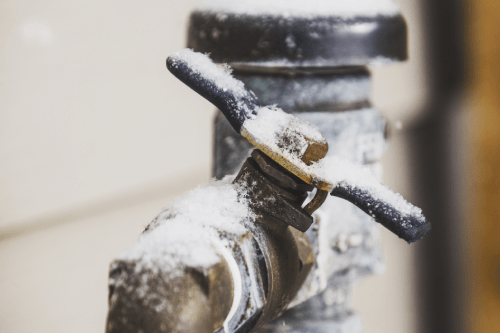How to Prevent Frozen Pipes in Cold Weather: Expert Advice
How to Prevent Frozen Pipes in Cold Weather: Expert Advice
Blog Article
What are your opinions on How To Avoid Freezing Pipes?

Winter can damage your plumbing, specifically by freezing pipelines. Here's just how to prevent it from occurring and what to do if it does.
Intro
As temperature levels decrease, the risk of frozen pipes rises, potentially bring about pricey repair services and water damage. Understanding exactly how to stop frozen pipes is vital for property owners in cold climates.
Comprehending Frozen Pipes
What creates pipes to ice up?
Pipes ice up when subjected to temperature levels below 32 ° F (0 ° C) for expanded periods. As water inside the pipes freezes, it broadens, taxing the pipeline wall surfaces and possibly causing them to burst.
Risks and damages
Frozen pipes can result in water disruptions, building damages, and costly repair services. Burst pipes can flood homes and cause substantial structural damage.
Signs of Frozen Pipeline
Recognizing frozen pipelines early can stop them from rupturing.
How to recognize icy pipes
Seek decreased water circulation from faucets, unusual smells or noises from pipes, and noticeable frost on revealed pipes.
Avoidance Tips
Shielding susceptible pipelines
Wrap pipes in insulation sleeves or use warm tape to secure them from freezing temperature levels. Concentrate on pipelines in unheated or exterior areas of the home.
Heating techniques
Keep indoor areas adequately heated up, particularly areas with plumbing. Open up closet doors to enable warm air to flow around pipelines under sinks.
Safeguarding Outdoor Plumbing
Yard tubes and exterior faucets
Disconnect and drain pipes garden pipes before wintertime. Install frost-proof faucets or cover exterior taps with insulated caps.
What to Do If Your Pipelines Freeze
Immediate actions to take
If you suspect frozen pipes, maintain faucets open to soothe pressure as the ice melts. Make use of a hairdryer or towels soaked in hot water to thaw pipelines slowly.
Long-Term Solutions
Architectural changes
Consider rerouting pipes away from exterior wall surfaces or unheated locations. Add additional insulation to attics, basements, and crawl spaces.
Upgrading insulation
Buy top quality insulation for pipes, attics, and walls. Proper insulation assists keep regular temperature levels and minimizes the threat of frozen pipelines.
Final thought
Stopping frozen pipelines requires positive actions and fast feedbacks. By recognizing the reasons, indications, and safety nets, house owners can secure their pipes during winter.
5 Ways to Prevent Frozen Pipes
Drain Outdoor Faucets and Disconnect Hoses
First, close the shut-off valve that controls the flow of water in the pipe to your outdoor faucet. Then, head outside to disconnect and drain your hose and open the outdoor faucet to allow the water to completely drain out of the line. Turn off the faucet when done. Finally, head back to the shut-off valve and drain the remaining water inside the pipe into a bucket or container. Additionally, if you have a home irrigation system, you should consider hiring an expert to clear the system of water each year.
Insulate Pipes
One of the best and most cost-effective methods for preventing frozen water pipes is to wrap your pipes with insulation. This is especially important for areas in your home that aren’t exposed to heat, such as an attic. We suggest using foam sleeves, which can typically be found at your local hardware store.
Keep Heat Running at 65
Your pipes are located inside your walls, and the temperature there is much colder than the rest of the house. To prevent your pipes from freezing, The Insurance Information Institute suggests that you keep your home heated to at least 65 degrees, even when traveling. You may want to invest in smart devices that can keep an eye on the temperature in your home while you’re away.
Leave Water Dripping
Moving water — even a small trickle — can prevent ice from forming inside your pipes. When freezing temps are imminent, start a drip of water from all faucets that serve exposed pipes. Leaving a few faucets running will also help relieve pressure inside the pipes and help prevent a rupture if the water inside freezes.
Open Cupboard Doors
Warm your kitchen and bathroom pipes by opening cupboards and vanities. You should also leave your interior doors ajar to help warm air circulate evenly throughout your home.

We were made aware of that report on Helpful Tips to Prevent Frozen Pipes this Winter through an associate on a different blog. Be sure to take the opportunity to share this article if you liked it. Thank you for taking the time to read it.
Need Help? Hire Us Now! Report this page